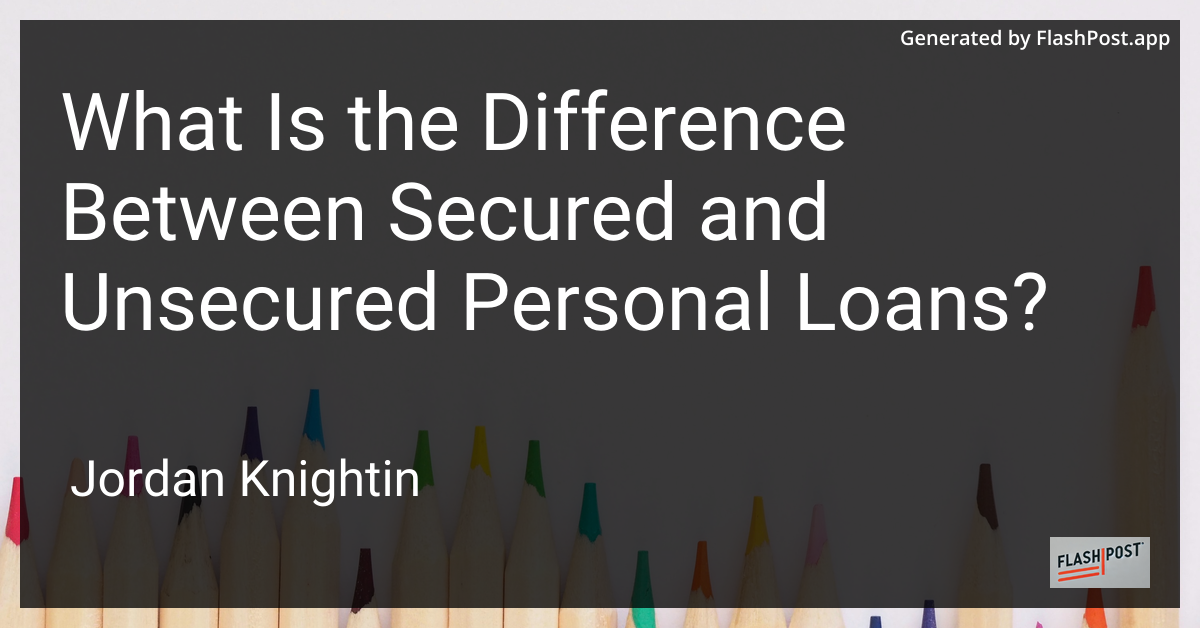

What Is the Difference Between Secured and Unsecured Personal Loans?
When it comes to personal finance, understanding the difference between secured and unsecured personal loans is crucial. Whether you’re planning a major purchase, consolidating debt, or funding a personal project, choosing the right type of loan can significantly impact your financial well-being. In this article, we’ll explore the key differences between secured and unsecured personal loans, helping you make an informed decision.
What is a Secured Personal Loan?
A secured personal loan is a type of loan that requires the borrower to provide collateral as a security. Collateral can be any asset of value, such as a car, home, or other valuable property. This asset acts as a guarantee for the lender, reducing their risk. In case the borrower fails to repay the loan, the lender has the right to seize the collateral to recover the outstanding amount.
Advantages of Secured Personal Loans:
-
Lower Interest Rates: Due to the reduced risk for lenders, secured loans usually come with lower interest rates compared to unsecured loans.
-
Higher Borrowing Limits: With collateral backing the loan, borrowers may be eligible for larger loan amounts.
-
Improved Approval Chances: Providing collateral can improve your chances of getting approved, especially if you have a lower credit score.
For more on what can be considered as viable collateral, read this guide on collateral for personal loans.
What is an Unsecured Personal Loan?
An unsecured personal loan doesn’t require any physical asset to be pledged as security. Instead, the loan approval is primarily based on the borrower’s creditworthiness, income, and financial history. With no collateral involved, the lender faces a higher risk, which often results in higher interest rates.
Advantages of Unsecured Personal Loans:
-
No Collateral Required: Since you don’t need to pledge any asset, your property is safe from repossession in case you’re unable to meet the repayment terms.
-
Faster Approval Process: Without the need to evaluate collateral, the approval process for unsecured loans is often quicker.
-
Flexibility: Unsecured loans can be used for a variety of purposes without specific conditions attached to the borrowing.
Explore how you can obtain an unsecured loan through this comprehensive guide on getting a personal loan without collateral.
Key Differences
- Collateral Requirement: The most significant difference is the need for collateral. Secured loans require it, while unsecured loans do not.
- Interest Rates: Secured loans typically offer lower interest rates due to decreased risk, while unsecured loans come with higher rates.
- Credit Score Impact: Since unsecured loans rely more on creditworthiness, a strong credit score is more crucial in their approval process.
Understanding these differences can help you determine the best option based on your financial situation, risk appetite, and loan purpose.
Conclusion
Choosing between a secured and unsecured personal loan depends on your personal financial circumstances and needs. If you have assets and wish to secure lower interest rates, a secured loan might be beneficial. Conversely, if you value flexibility and have a robust credit profile, an unsecured loan may be more suitable. It’s also wise to consider the broader financial implications, such as the tax implications of a personal loan in 2025.
Understanding these facets can empower you to make an informed and confident decision, aligning your loan choice with your long-term financial goals.
